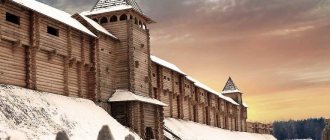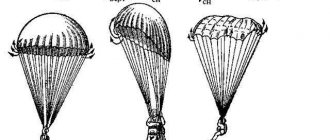- Construction of a medieval castle
When we hear the phrase “medieval castle,” our imagination immediately pictures a majestic structure, with high towers, battlements, on which stern knights in armor stand guard. And someone may even imagine some kind of dragon flying in the sky above the castle itself and a wise wizard with a long gray beard living in one of the castle towers (usually the tallest). It’s not without reason that the image of a castle is very popular in such genres as fantasy, various fairy tales, and so on. But often real history is no less interesting than various fairy tales, and our today’s article will be devoted to the most real castles, their structure and place in our history.
Story
In fact, the history of the appearance of castles does not even begin in the Middle Ages, but in much earlier times, perhaps even prehistoric. And the appearance of castles and fortresses as such is connected with the satisfaction of one of the basic human needs - the need for protection. After all, times have always been turbulent, no, of course, there were times that were relatively more peaceful, but even then there were wars somewhere. And by and large, wars have always been fought as long as humanity has existed. And even if at some time in some place they were not carried out, there was always a certain marginal part of society who wanted to feast on the good of their neighbor (and those far away as well).
That is, castles were originally created as a means of providing protection for themselves and their loved ones, so that in the event of an attack, either by enemy troops, or simply by dashing robbers and bandits, they would have somewhere to hide and successfully repel the attack of uninvited guests.
The first castles in history were completely different from what we mean by them now - they were built of wood and consisted of a space enclosed by a wooden palisade and a ditch dug around this palisade.
This is what similar wooden castles looked like. Of course, they have not survived to our times.
Progress did not stand still, and construction from wood was replaced by construction from stone. The first stone castles began to be built
Romans, they often arose in places where the fortified garrisons of the Roman legions were located. With the fall of the Roman Empire and the onset of the Middle Ages, the work of castle building was taken over by numerous counts, barons, feudal lords and, of course, kings of the newly formed European medieval states.
The Middle Ages were a very turbulent time, and the need for protection was especially strong, so castles sprang up like mushrooms after rain - in case of danger, all residents of the surrounding villages fled to the protection of the castle walls. Subsequently, large medieval cities were formed on the site of many castles. For example, the hometown of the author of the article, Lviv, was formed from a castle built by Prince (and later King) Danila Galitsky in the 1240s. And already in 1256 there is the first written mention of the city, which arose from a settlement around this very castle and was named after the son of the founder Lev Danilovich - Lvov. Unfortunately, the Lviv Castle (aka the High Castle) has not survived to this day.
Besieged Morton Castle in Scotland, medieval miniature.
Over time, in the late Middle Ages, castles from ordinary places of refuge and protection turned into an attribute of luxury, power and prestige - it happened that an influential feudal lord with a fortified castle could be beyond the control of even the king himself. In general, European feudal lords often compared their castles (hello to grandfather Freud) to see who had the larger and more impregnable castle.
Hill and tower
Castles became widespread in Europe in the 10th century. Then these were not at all those majestic stone structures that were so familiar to us. Early fortresses were more utilitarian than beautiful. But such fortification was easily and quickly erected by literally a couple of dozen workers.
The first castles were built extremely simply. A suitable hill was selected - if it was not in the right place, then an artificial embankment had to be made - and a large tower made of logs was built on it. A palisade with gates made of strong boards was installed around the tower.
Such a fortification can be built in just a couple of weeks. Despite this, its combat effectiveness is very high. It was almost impossible to take such a castle with a detachment of cavalry. If the defenders had supplies of food and water, they could for a long time resist the numerically superior detachment of the besiegers.
But wood is short-lived and inferior in strength to stone. Therefore, at the first opportunity, wood-earth castles began to be converted into stone ones. At first, they completely repeated the previous design - a large tower and walls around it. Only now all the buildings were erected from hewn stone of the type that was abundant in the surrounding area.
Lock device
In general, every decent medieval castle had to meet the following basic requirements:
Diagram of a medieval castle.
One of the important details of a medieval castle is a deep moat dug along its perimeter, and in front of it is a rampart of elongated earth. Ideally, the moat completely encircles the walls of the castle, but often the landscape and shape of the soil do not allow this. If the soil around the castle is rocky, then they either don’t dig a ditch at all, or make it small, capable of delaying only the advance of enemy infantry. Some historians classify the types of medieval castles depending on whether they have a moat or, conversely, its absence.
If there is a deep moat, then the entrance to the medieval castle is through a special drawbridge, which is usually driven by mechanisms hidden in the building above it. Also in European castles there were often drawbridges that worked on the principle of a swing - one half of them was inside the castle, the other outside. During an attack on the castle, the inner part of the bridge rose, lowering the outer one, thereby throwing the attackers who managed to climb onto it into a “wolf pit” hidden in the moat. Also, with the gates closed, one could enter the castle through the side gate, which also had its own small drawbridge.
Czech Talmberg Castle, screenshot taken from the recently released excellent historical computer game Kingdom come Deliverance, made by the Prague studio Warhorse (we’ll remember about it later).
The gate of a medieval castle is its most vulnerable part, so those attacking the castle focused their main efforts on first knocking out the gate with a special siege ram and breaking into the castle itself. The defenders of the castle tried with all their might to prevent this, and it was at the gates during the siege that the most furious battles took place. The gates themselves were additionally reinforced with metal bars that went down behind them and steel and iron bolts. On top of the gate tower was equipped with the so-called “resin noses”, through which hot tar poured onto those storming the gate. (By the way, a very effective means of protection against enemies in the Middle Ages).
This is what resin noses look like.
Popular attractions
The dungeons of the late Middle Ages were different from the early dungeons. The new type of towers were erected as an addition to the existing buildings of the castle, and were not its core, as before. Both their location and their internal layout were different.
If the tower was built on the territory of an ordinary castle, the main defensive fortifications of which remained the ramparts and the erected hill, then the donjon was located in a new place (the previous embankments sometimes could not withstand the load of the new fortification). For example, this happened in Rochester. The old castle there, Boley Hill, is located next to the new building. The donjon, the photo of which is presented above, as a symbol of the Middle Ages, remains an important part of the tourism industry of Western European countries.
Castle walls
The walls of the castle, perhaps, deserve a whole separate section, because, in fact, they form the castle itself. So, first of all, the walls of a medieval castle had to have a deep foundation, so that it would be difficult for opponents to dig under them. The walls themselves were built from processed stone or brick.
Castles often had double walls: a high outer wall and a smaller inner one. Between them there was an empty space, which received the German name “zwinger”. This zwinger was of significant importance for the defenders of the castle, the fact is that if the attackers managed to overcome the outer wall, they found themselves in this very close “zwinger”, sandwiched between two walls, where they became an excellent target for archers.
Also, almost all the walls of medieval castles have battlements on top, behind which the defenders could hide, for example, while loading their crossbows. In addition to the battlements, there were loopholes on the walls through which archers, crossbowmen, and, in later times, musketeers could fire at the enemy.
Lubart's Castle in Lutsk.
At the corners of the castle walls there were small, flanking (protruding outward) towers, located in such a way that it was convenient for the castle defenders to fire along the walls in two directions.
Dangerous restroom
0
Source:
Going to the castle bathroom was an adventure. There were several latrines, and they were tiny rooms jutting out from the ground floor, often on the cold and windy north side. Toilets - they were called "wardrobes" - were quite simple: they were made of boards supported by a stone with a hole cut in it. But that's not the strangest thing. They were called wardrobes because they also served as wardrobes for people! The costumes of the nobility were kept there, because it was believed that the smell would repel insects and prevent them from damaging the exquisite outfits.
Castle inside
An important part of the internal structure of the castle was the presence of a well in it, and since castles were often built on rocky, upland areas, sometimes the well had to be laid to a depth of more than 100 meters. (For example, the well of Königstein Castle in Saxony was dug to a depth of 140 meters). Due to the fact that water was obtained with such difficulty, issues of personal hygiene and sanitation for the inhabitants of the castle left much to be desired.
Also in the castle there were a number of buildings designed to fully provide for the life of its inhabitants during a long siege: a bakery, a steam bath and a kitchen.
The owner of the castle usually lived in its central tower, which, depending on his wealth and time period, could be either luxuriously furnished or very ascetic.
For example, this is what the chamber in the German castle of Marksburg looks like.
Also, the castle often had a prison, also known as a dungeon, where various commoner criminals were kept, while noble prisoners taken captive for ransom (a common practice in the Middle Ages) were kept in special guarded “VIP chambers” in the main tower of the castle.
Also, a mandatory attribute of the castle was the presence of a small chapel, or even a church (if the castle was larger). And among the inhabitants of the castle there was always a chaplain or priest, who, in addition to his priestly duties, served as a clerk and teacher (in those days, not even every nobleman was literate).
But the toilet in the castle looks so interesting - in the form of such an extension to the wall. It is interesting to know that the toilets in medieval castles were not heated, and visiting them in winter was a particularly unpleasant experience.
And in general, life in a medieval castle, especially from the point of view of us, spoiled by the benefits of modern civilization, was not easy - first of all, in stone castles it was very dark and cold, drafts were frequent guests there. Due to their fortification nature, the windows of a medieval castle let in little sunlight, and often they were not even glazed. Fireplace heating helped a little, but still keep in mind that the walls of medieval castles were covered with various thick carpets and tapestries not only for aesthetic reasons, but also simply to retain more heat.
Medieval Romanesque castle
Donjon and citadel
In the center of the castle there was always a donjon - the largest and tallest tower, a kind of fortress within a fortress.
The walls of the donjon are the thickest. As a rule, there were no windows on the ground floor, and the entrance to the tower was often located at the level of the second floor. A wooden gallery led to it, which at the moment when the donjon became the last line of defense could easily be destroyed or set on fire. The large tower contained the living quarters of the owner of the castle, an arsenal with weapons, and food supplies in case of a siege.
Gradually, the donjon turned into a castle citadel - an entire fortified complex in the heart of the castle.
Have you ever seen such fortifications, where in the center there seems to be another small fortress? So this is the citadel.
Its task is to make it difficult to capture the castle when the defenders are fighting on the last line of defense. The walls of the citadel formed the inner courtyard of the castle. It is usually very small, with a well in the center of the yard.
Video
And finally, an interesting documentary about the history of medieval castles in Europe.
PS And almost as an advertisement, but the key “almost”, a special inspiration when writing this article was the recently released computer game
Kingdom come Deliverance, which is based on real historical events that once took place in the medieval Czech Republic, and is, among other things, an excellent virtual excursion into the history of the European Middle Ages. In a word, our historical site recommends it to all readers.
Author: Pavel Chaika, editor-in-chief of the historical site Time Travel
When writing the article, I tried to make it as interesting, useful and high-quality as possible. I would be grateful for any feedback and constructive criticism in the form of comments on the article. You can also write your wish/question/suggestion to my email [email protected] or Facebook, with respect, the author.
Historical site Time Travel
Protection from above
0
Source:
From the latrines outside, out of habit, it is not easy to distinguish machikuli - a type of loopholes designed for dropping stones and other improvised weapons on the heads of enemies. Originating in the Middle East, machicolations were transported to Europe during the Crusades and became an integral part of fortress design. They were most often used in French castles. Machiculi were used to attack enemies from above. A closed hole in the floor allowed soldiers to throw boulders and pour boiling water and oil on their attackers.
Bran, Brasov, Romania
The pride of Romania, Bran Castle, was founded at the beginning of the 13th century by the knights of the Teutonic Order, and centuries later it became a royal residence. Tourists flock to Bran for vampire romance: according to legend, Vlad the Impaler, the prototype of Dracula, once stayed here, although no historical evidence has been found for this.
Website: bran-castle.com
Conwy, Wales, UK
The walls of the majestic Conwy Castle, which was once owned by William Wallace’s antagonist, King Edward I, have repelled many attacks and sieges in its time. Today this medieval fortress is open to visitors. The towers of Conwy offer a breathtaking view of the city of the same name and its picturesque embankment.
Website: cadw.wales.gov.uk
Feudal lords: who are they?
Before we talk about what the feudal lord's castle looked like, let's consider what kind of class it was in medieval society. European states were then monarchies, but the king, at the top of power, decided little. Power was concentrated in the hands of the so-called lords - they were the feudal lords. Moreover, within this system there was also a hierarchy, the so-called feudal ladder. On its lower tier stood knights. Feudal lords located one step higher were called vassals, and the vassal-seigneur relationship was preserved exclusively for nearby levels of the ladder.
Each lord had his own territory, on which the feudal lord’s castle was located, a description of which we will definitely give below. Subordinates (vassals) and peasants also lived here. Thus, it was a kind of state within a state. That is why in medieval Europe a situation called feudal fragmentation developed, which greatly weakened the countries.
Relations between feudal lords were not always good neighbors; there were frequent cases of hostility between them and attempts to conquer territories. The feudal lord's possession had to be well fortified and protected from attack. We will consider its functions in the next part.
Hohensalzburg, Salzburg, Austria
One of the largest castles in Europe was built at the beginning of the 11th century and has never been captured in its history, only surrendering once without a fight. Taking the ancient funicular up to the Festungsberg rock, where the castle is located, you can enjoy an impressive panorama of Salzburg and its surroundings.
Website: hohensalzburgcastle.com
More on the topic: Life is like a fairy tale. 11 hotels in luxurious castles and palaces
Trakai, Lithuania
On one of the islands of Lake Galvė stands Trakai Castle, the former residence of Lithuanian princes, which has earned the reputation of one of the most impregnable fortresses in Europe. For a long time the castle was empty, but today it has been restored and is open to guests. Festivals and historical reconstructions are regularly held within the walls of Trakai.
Website: trakaimuziejus.lt
Spis Castle, Spisske Podhradie, Slovakia
On the tops of dolomite rocks is located the largest castle in Slovakia, the inaccessibility of which is the subject of legends. Today its gates are open for guests who want to wander through the former chambers of the noble owners of the castle, shoot with medieval weapons or take part in a historical reconstruction.
Website: spisskyhrad.sk
Bodiam, East Sussex, England
Surrounded by a moat and seemingly floating on water, Bodiam Castle is one of the most picturesque ancient fortresses in England. In addition to spiral staircases, crenellated bastions and picturesque landscapes, guests can expect costume performances, archery, a medieval quest and other entertainment.
Website: nationaltrust.org.uk
Neuschwanstein, Bavaria, Germany
The most popular castle in Germany with a romantic name, which is translated from German as “New Swan Cliff”, is visited by more than 1 million people every year. Built at the end of the 19th century by order of the “fairy-tale king” Ludwig II, it served as the prototype for the Sleeping Beauty Castle in Disneyland Paris.
Website: neuschwanstein.de
1) Choose your building site carefully
It is extremely important to build your castle on high ground and at a strategic point.
Castles were usually built on natural elevations, and were usually equipped with a link connecting them with the external environment, such as a ford, bridge or passage.
Historians have rarely been able to find evidence from contemporaries regarding the choice of location for the construction of the castle, but they still exist. On September 30, 1223, 15-year-old King Henry III arrived in Montgomery with his army. The king, who had successfully carried out a military campaign against the Welsh prince Llywelyn ap Iorwerth, was planning to build a new castle in this area to ensure security on the border of his possessions. The English carpenters had been given the task of preparing the wood a month earlier, but the king's advisers had only now determined the site for the construction of the castle.
Montgomery Castle, when it began to be built in 1223, was located on a hill
After a careful survey of the area, they chose a point on the very edge of a ledge overlooking the Severn valley. According to the chronicler Roger of Wendover, this position "looked unassailable to anyone." He also noted that the castle was created “for the security of the region from frequent attacks by the Welsh.”
Advice
: Identify areas where the topography rises above traffic routes: these are natural locations for castles. Keep in mind that the design of the castle is determined by where it is built. For example, a castle will have a dry moat on a ledge of outcroppings.











